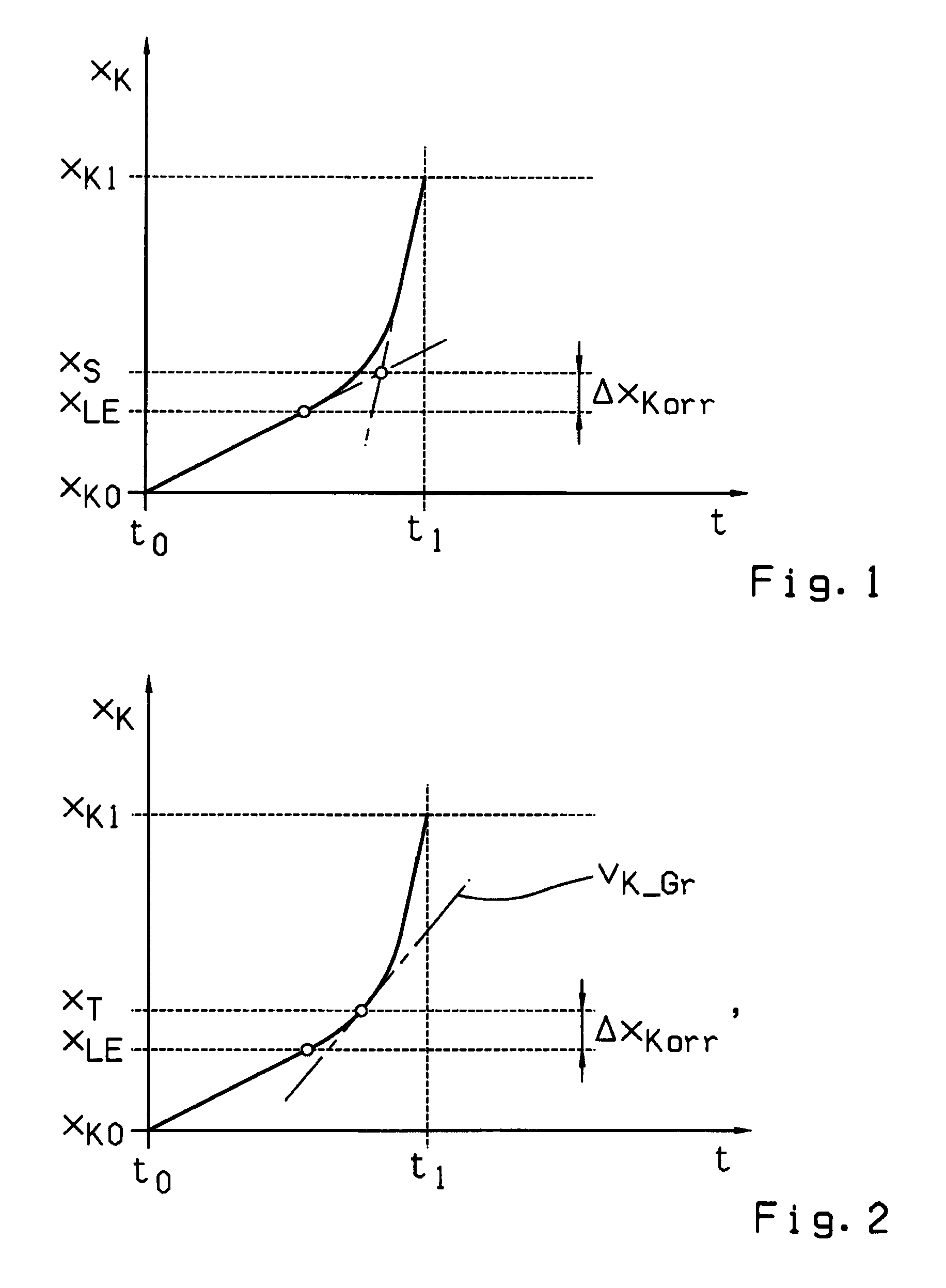Method for controlling an automated friction clutch
a technology of friction clutches and friction plates, applied in the direction of clutches, instruments, computing, etc., can solve the problems of limited adaptation methods of automated friction clutches, and achieve the effect of increasing the accuracy of clutch control
- Summary
- Abstract
- Description
- Claims
- Application Information
AI Technical Summary
Benefits of technology
Problems solved by technology
Method used
Image
Examples
Embodiment Construction
[0031]The continuous line in the diagram of FIG. 1 represents the time variation of the release travel path xK(t) for a diaphragm spring clutch during its actuation, produced during a continuous control or actuation of the clutch control element, i.e. during constant increase of the releasing force. Thus, the time variation of the release travel path xK(t) from the beginning of the disengagement process at time t0 until the end of the disengagement process at time t1 consists of a small linear increase of the release travel path xK(t) at the beginning of the disengagement process, followed by a progressive rise of the release travel path xK(t), i.e. a clear increase of the disengagement rate vK=dxK / dt, and then a substantially linear and steeper increase of the release travel path xK(t) toward the end of the disengagement process.
[0032]The linear rise of the release travel path xK(t) of small inclination at the beginning of the disengagement process corresponds to the linear increas...
PUM
 Login to View More
Login to View More Abstract
Description
Claims
Application Information
 Login to View More
Login to View More - R&D
- Intellectual Property
- Life Sciences
- Materials
- Tech Scout
- Unparalleled Data Quality
- Higher Quality Content
- 60% Fewer Hallucinations
Browse by: Latest US Patents, China's latest patents, Technical Efficacy Thesaurus, Application Domain, Technology Topic, Popular Technical Reports.
© 2025 PatSnap. All rights reserved.Legal|Privacy policy|Modern Slavery Act Transparency Statement|Sitemap|About US| Contact US: help@patsnap.com



